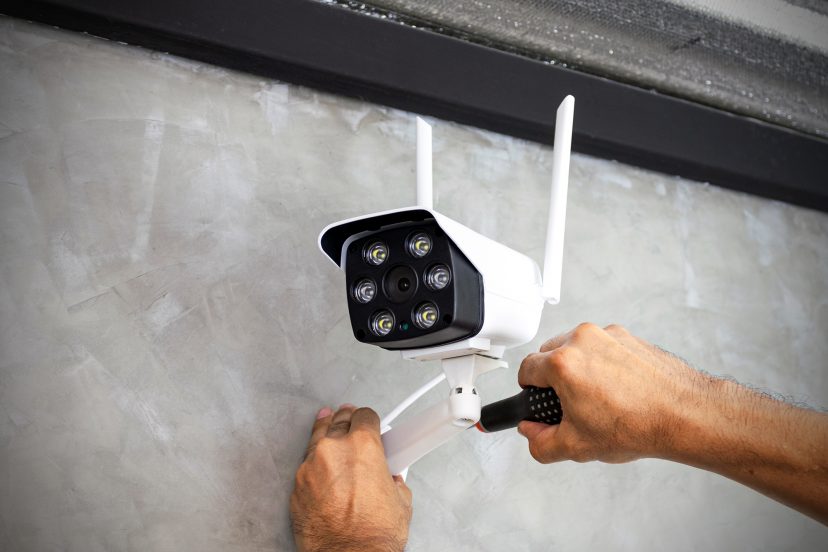
News & Resources
3 common video surveillance issues you can avoid with managed video network services

3 common video surveillance issues you can avoid with managed video network services
One of the most challenging aspects of enterprise video surveillance is the day-to-day management of so many devices.
Large, distributed surveillance systems can have hundreds or even thousands of security cameras, network video recorders (NVRs) and encoders, spread out over many locations.
Video management software can certainly help you maintain these devices with health-monitoring alerts, but if you don’t have time to manage these notifications, your system could still be vulnerable to connection problems, hard drive failures or other issues that could impact recording.
Sometimes it’s only after an issue occurs that you realize you need help.
This is where managed video network services come into play. In most managed video service arrangements, you can continue to record and store video locally, but the day-to-day maintenance of all of your devices is handled offsite by a third-party provider. So instead of worrying about camera and NVR connections, software upgrades and other issues, you leave the daily monitoring of your video surveillance infrastructure in the hands of trained professionals. Issues can often be resolved remotely, or your provider can dispatch a technician if required.
Businesses large and small turn to managed video network services for many reasons, but time savings and peace of mind are some of the key motivators. Managed services can help you avoid many of the problems a typical security manager might face in an enterprise video deployment, including these three common dilemmas:
1. Lost video
The consequences of lost video can be enormous. Take, for example, a customer slip and fall incident. The customer claims your floor was wet and no warning sign was posted, making you liable for their injury. But your employees claim otherwise. Without surveillance video, you can’t prove what actually took place and you could be on the hook for damages.
Unfortunately, I hear stories like this all the time. Lost video can happen for a variety of reasons, including a camera connection issue, a failed hard drive, or incorrect NVR retention settings, which can cause the recorder to overwrite video.
Managed video network services can help you avoid the problem of lost video by overseeing the configuration settings on your cameras and recorders to ensure they are correct. Your service provider will also monitor your NVR peripherals (fans, batteries, and hard drives) as well as all recorder and camera connections to make sure equipment is functioning properly.
2. Out-of-date software and firmware
With heightened concerns about security vulnerabilities, it’s essential to keep IP camera and recorder software up to date.
In enterprise deployments, however, it can take a lot of time to apply so many updates, and you may also struggle to keep track of which units need patches or upgrades and which ones don’t.
A good managed video service provider can handle this entire process for you with remote software upgrades scheduled during off-peak hours. They’ll let you know when new software/firmware versions become available and apply these upgrades for you, helping to protect your network against vulnerabilities and also ensure you’re taking advantage of the latest feature enhancements.
Your provider should also have detailed reports on your product inventory, including device model numbers, age of equipment and warranty status, to help with lifecycle management. In some cases, you can actually access this information yourself, via a web platform.
3. Costly truck rolls
Sometimes a simple problem is just that: simple. But without the right expertise, you could waste time and money trying to figure out what’s wrong.
Managed video network services can help avoid unnecessary truck rolls through remote issue resolution. At Tech Check, we can re-start our recorders remotely, and troubleshoot other issues to locate the problem. If a technician is required onsite, we’ll dispatch them for you, and also validate that the problem has been solved before closing the case. This closed-loop workflow can be invaluable for service level agreement (SLA) reporting if you’re working with a security integrator and have specific standards for how long it should take to resolve an issue. Again, by working on the same cloud-based platform that our customers have access to, we can allow them to investigate any ticket themselves or look at service level trends over time.
As you can see, managed video network services can alleviate the burden of video surveillance device management and keep your video network in optimal health. Depending on the provider you choose, managed services could also give you greater visibility into your network and help with asset and SLA performance management.
Like most service arrangements, managed video network services come with a monthly fee, so it’s important to evaluate what you’re spending now to monitor and maintain your surveillance network and how effective that is for your organization.
For some businesses, it makes sense to keep this work in-house because they have a dedicated system administrators who are responsible for their video infrastructure. For others, it’s more cost-effective to outsource this function because they don’t have the budget for additional staff, and they also want the peace of mind that comes with knowing qualified experts are monitoring the network.